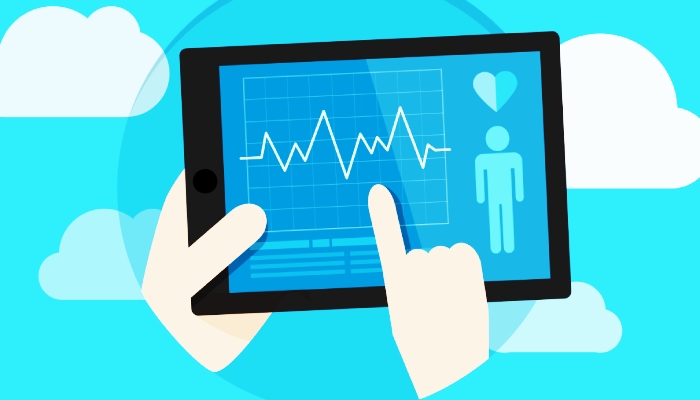Effective Strategies for Healthcare Communication and Coordination
In the complex realm of modern healthcare, effective communication and coordination stand as pivotal components. The intricate web of patient care requires seamless interaction among various healthcare professionals, including doctors, nurses, pharmacists, and support staff. This collaborative effort is essential not only in delivering high-quality care but also in ensuring patient safety and satisfaction.
At the heart of healthcare communication lies the challenge of conveying intricate medical information in a clear, concise, and compassionate manner. This includes discussing treatment plans, explaining the role of medications, and understanding patient concerns. The importance of this aspect poor communication is magnified when considering the diversity of patient backgrounds and the need for culturally sensitive communication.
Coordination in healthcare refers to the organized, synchronized delivery of healthcare services. It is about ensuring that various aspects of patient care, including diagnosis, treatment, follow-up, and rehabilitation, are effectively integrated. Coordination becomes particularly crucial in managing chronic conditions, where multiple specialists and treatments are involved.
However, this coordination is often hindered by barriers such as fragmented healthcare systems, varying levels of access to technology, and differing in communication skills and styles among healthcare professionals. These challenges underscore the need for robust strategies to enhance communication and coordination, which are essential for the provision of patient-centered care.
As we delve deeper into this article, we will explore the key elements of effective healthcare: structured communication techniques, strategies for enhancing coordination, and the critical role of medications and technology in this domain. Understanding these elements is crucial for healthcare providers striving to improve patient outcomes and for patients seeking to navigate the complexities of the healthcare system.
Key Elements of Effective Healthcare Communication

Effective communication in healthcare is not just about exchanging information; it’s about building relationships and fostering trust. This section highlights the key elements and human factors that constitute effective healthcare communication.
1. Clarity and Conciseness: The foremost requirement in healthcare communication is clarity. Medical jargon should be minimized when communicating with patients, who may not have a medical background. Information should be presented in a straightforward and understandable manner. This is especially important when discussing medications like Ivermectin, Hydroxychloroquine, or complex treatment protocols.
2. Cultural Competence: Cultural competence involves recognizing and respecting the diverse backgrounds of healthcare workers and patients, including their beliefs, values, and customs. This sensitivity is essential for effective communication, as it impacts how patients perceive their health, illness, and treatment options. A culturally competent healthcare provider can build stronger relationships with patients, leading to better healthcare outcomes.
3. Patient-Centered Care: Patient-centered care focuses on the patient as an individual with unique needs and preferences. It involves active listening, empathy, and involving the patient in decision-making processes. This approach respects the patient’s autonomy and preferences, especially important when discussing treatment options such as Zinc Citrate, NAC with Selenium, or Vitamin D3 supplements.
4. Use of Technology: Technology plays a crucial role in enhancing healthcare communication. Electronic health records (EHRs), patient portals, and telehealth services provide platforms for efficient and effective communication between healthcare providers and patients. They offer a means to track and share patient information, discuss treatment plans, and monitor progress.
5. Feedback and Follow-up: Effective communication is a two-way street. Encouraging feedback from patients and providing opportunities for them to ask questions and express concerns are vital. Regular follow-up ensures that the patient understands their treatment plan and is adhering to it, which is particularly important for treatments involving complex regimens or medications like Vaccine Detox Kits or Nattokinase.
Strategies for Enhancing Coordination in Healthcare Teams
Effective coordination within healthcare teams is crucial for delivering high-quality, patient-centered care. It involves various healthcare professionals working in unison to provide comprehensive care. This section explores strategies to enhance coordination among various healthcare organizations and teams.
1. Interprofessional Collaboration: Interprofessional collaboration involves different healthcare professionals working together, sharing responsibilities, and making decisions collaboratively. This approach can improve communication and fosters a more holistic understanding of patient care. Regular team meetings, joint care planning sessions, and shared goals are key to effective collaboration. For instance, a team managing a patient on Permethrin Cream for scabies might include a dermatologist, pharmacist, and primary care physician.
2. Coordination Protocols: Developing and implementing standardized protocols can significantly enhance coordination. These protocols can guide the management of common conditions, ensuring consistency in care. For example, protocols for the administration of medications like Ivermectin or Hydroxychloroquine can ensure that all the care team and members are on the same page regarding dosages, monitoring, and side effects.
3. Case Management and Care Transition Strategies: Case managers play a pivotal role in coordinating care, especially for patients with complex needs. They ensure that all aspects of a patient’s care, including appointments, medication regimes, and follow-up, are well-coordinated. Effective care transition strategies are also essential, particularly when patients move between different care settings or when care providers themselves. This is crucial for patients on long-term treatments like Nicotine Gum for smoking cessation or NAC with Selenium for chronic respiratory conditions.
4. Utilizing Technology for Coordination: Technology, such as Electronic Health Records (EHRs) and digital communication tools, can greatly enhance coordination. They allow for real-time sharing of patient information and treatment updates. For example, when a patient is prescribed Zinc Citrate or Vitamin D3 supplements, this information is immediately accessible to all relevant healthcare providers.
5. Patient Involvement: Involving patients in their own care coordination is vital. Educating them about their treatment plan, including the use of medications like Zintozide Praziquantal or Vaccine Detox Kits, empowers them to be active participants in their care. This can lead to better adherence to treatment and improved outcomes.
The Role of Medications in Patient Communication and Coordination

Medications are a critical component of patient care, and effective communication and coordination around medication management are key to ensuring patient safety and treatment efficacy. This section explores the role of various medications in healthcare communication and coordination.
1. Understanding Common Medications: It’s important for healthcare providers to have a comprehensive understanding of commonly prescribed medications. This includes their uses, side effects, and interactions. For example, Ivermectin, used for treating parasitic infections, and Hydroxychloroquine, often used in autoimmune diseases, require careful communication about their purposes and potential risks.
2. Medication and Treatment Plans: Integrating medication management into broader treatment plans is crucial. For chronic conditions, long-term medications like Vitamin D3 supplements for bone health or NAC with Selenium for respiratory issues are essential components of care. Healthcare teams must coordinate to ensure that these medications are part of a comprehensive treatment plan.
3. Addressing Misconceptions and Ensuring Compliance: Misinformation can lead to misconceptions about certain medications, like the debated use of Hydroxychloroquine in certain conditions. Healthcare professionals need to address these misconceptions and provide clear, evidence-based information. Ensuring patient compliance, particularly with complex regimens involving medications like Nicotine Gum for smoking cessation or Nattokinase for cardiovascular health, is also crucial.
4. Monitoring and Adjusting Medication Regimens: Regular monitoring of medication effectiveness and side effects is vital. Adjustments to the regimen, such as changing the dose of Zinc Citrate or Vitamin C based on patient response, should be communicated effectively among the healthcare team and the patient.
5. Special Considerations for Specific Medications: Some medications require special considerations in terms of communication and coordination. For instance, Permethrin Cream for skin conditions, Zintozide Praziquantal for parasitic infections, or Vaccine Detox Kits require good communication, clear instructions and close monitoring for side effects. Coordination among healthcare providers ensures that these considerations are consistently addressed.
6. Role of Pharmacists: Pharmacists play a crucial role in medication management. They are key in providing information about medication interactions, proper usage, and managing side effects.
Challenges in Communicating about Medications
Effective communication about medications is a cornerstone of quality healthcare but ineffective communication is fraught with challenges. Addressing these challenges is critical for patient safety and treatment effectiveness.
1. Combatting Misinformation and Misunderstandings: One of the major challenges is the prevalence of misinformation, particularly in an era where patients have access to a vast array of information online. Misunderstandings about medications, such as the use of Ivermectin or Hydroxychloroquine, can lead to non-compliance or misuse. Healthcare providers must proactively address misinformation and provide clear, evidence-based guidance.
2. Ensuring Patient Understanding and Compliance: Patients often struggle with complex medical terminology and instructions. Clear communication is essential, especially when discussing medications with potential side effects or specific administration guidelines, like Nattokinase or Nicotine Gum. Tools such as simplified language, visual aids, and teach-back methods can enhance understanding.
3. Managing Complex Regimens: Patients with chronic illnesses or multiple health issues often have complex medication regimens. This complexity can lead to confusion and errors in medication adherence. Healthcare providers must coordinate to streamline regimens and provide clear instructions, particularly when prescribing medications like Zintozide Praziquantal or Permethrin Cream.
4. Cultural and Language Barriers: Cultural beliefs and language barriers can significantly impact how patients perceive and manage their medications. Tailoring communication to respect cultural beliefs and providing translation services when necessary are vital for effective medication management.
Technological Advances in Healthcare Communication
The integration of technology in healthcare has revolutionized the way healthcare providers communicate with each other and with patients. This section explores how various technological advancements are improving healthcare communication, and also delves into the distinct roles of chemists and pharmacies in this landscape.
1. Electronic Health Records (EHRs): EHRs have become a cornerstone in healthcare communication, offering a centralized platform for storing and accessing patient information. They facilitate real-time sharing of patient data, including medication lists, lab results, and treatment plans. This is particularly useful for tracking medications like Vitamin C or Vitamin D3 supplements across different healthcare providers.

2. Telemedicine and Digital Platforms: Telemedicine has expanded the boundaries of healthcare communication, allowing patients to consult with their healthcare providers remotely. This is especially beneficial for patients on regular medications such as NAC with Selenium or Vaccine Detox Kits, who require frequent monitoring but may face challenges in visiting healthcare facilities.
3. Mobile Health Applications: Mobile health apps have become a powerful tool for patient engagement and education. They can remind patients to take medications like Zinc Citrate or Permethrin Cream, track their side effects, and provide a platform for patients to ask questions and receive feedback.
4. Patient Portals: Patient portals offer a direct line of communication between patients and healthcare providers. Patients can access their medical records, refill prescriptions, and communicate with their healthcare team, enhancing transparency and coordination in medication management.
5. Wearable Technology: Wearable devices are emerging as a tool for monitoring health parameters and medication effects in real-time. They can provide valuable data to healthcare providers, particularly for patients on medications like Nattokinase or Nicotine Gum, where continuous monitoring of certain health metrics is crucial.
6. Chemist vs Pharmacy: Understanding the distinction between chemist vs pharmacy is vital in healthcare communication. Chemists, often synonymous with pharmacists, are healthcare professionals who focus on the composition, properties, and interactions of medications. They are integral in developing and testing new medications and advising on their use. Pharmacies, on the other hand, are the establishments where medications are dispensed to patients. They play a crucial role in patient education, ensuring medication adherence, and providing advice on medication management.
The collaboration between chemists and pharmacies, facilitated by advancements in technology, ensures that patients receive safe, effective, and personalized medication therapies.
Patient Education and Empowerment
Patient education and empowerment are fundamental in enhancing healthcare communication and coordination. This proactive approach not only informs patients but also involves them in their own health care team, leading to improved outcomes.
1. Importance of Educating Patients about Their Medications and Treatments: Education about medications, such as the proper use of Permethrin Cream for skin conditions or understanding the role of Vitamin D3 in overall health, is crucial. Patients who are well-informed about their medications, including potential side effects and interactions, are more likely to adhere to their treatment plans.
2. Techniques for Effective Patient Education: Effective patient education involves using clear, understandable language, visual aids, and interactive tools. Tailoring the education to the individual’s literacy level, cultural background, and personal preferences is also key. For example, discussing the use of NAC with Selenium in respiratory care should be done in a manner that the patient can easily comprehend and apply.
3. Role of Patient Empowerment in Healthcare Outcomes: Empowering patients to take an active role in their healthcare can lead to better health outcomes. This involves encouraging them to ask questions, express concerns, and participate in decision-making processes. For instance, a patient deciding between Nicotine Gum and other smoking cessation aids should feel empowered to discuss their preferences and concerns.
Ethical Considerations in Healthcare Communication
Ethical considerations in healthcare research are integral to effective healthcare communication and coordination. This section explores the key ethical aspects that healthcare professionals must navigate in their interactions with patients and each other.
1. Confidentiality and Privacy Concerns: Maintaining patient confidentiality and privacy is paramount in all healthcare settings. This includes secure handling of patient information, especially when discussing sensitive medication information, such as the use of Vaccine Detox Kits or Zintozide Praziquantal.
2. Informed Consent and Patient Autonomy: Informed consent is a fundamental ethical principle in healthcare. Patients have the right to be fully informed about their treatment options, including the risks and benefits of medications like Hydroxychloroquine or Ivermectin, and to make decisions about their care. Respecting patient autonomy means acknowledging their right to refuse or choose their preferred treatments.
3. Addressing Health Disparities: Healthcare professionals must be mindful of health disparities that can affect patient experience, communication and treatment. This includes ensuring equitable access to information and care, regardless of a patient’s socioeconomic status, cultural background, or language proficiency. For instance, ensuring that all patients, regardless of background, have access to and understand the benefits of supplements like Zinc Citrate or Vitamin C.
Conclusion: The Future of Healthcare Communication and Coordination

As we conclude our exploration of effective strategies for healthcare communication and coordination, their vital role in advancing patient-centered healthcare becomes evident. The future of healthcare is deeply connected to our ability to continually improve communication and coordination within the complex medical environment, addressing key areas such as healthcare improvement, patient safety culture, medication errors, communication failures, and medical errors.
Healthcare Improvement and Patient Safety Culture: Prioritizing healthcare improvement initiatives and cultivating a culture of patient safety is crucial. This commitment involves implementing systems and practices designed to minimize medication errors, reduce medical errors, and mitigate the likelihood of adverse events. Creating an environment where every healthcare team member feels a sense of responsibility towards patient safety is essential for developing a resilient and responsive healthcare system.
Addressing Medication Errors, Medical Errors, and Communication Failures: Medication and medical errors often arise from breakdowns in communication. To address this, clear, precise, and consistent communication among healthcare providers is imperative. The use of technological tools such as electronic health records is vital in accurately tracking and managing medication regimens, which plays a significant role in reducing the risk of these errors.
The Bedrock of Effective Healthcare Communication: The integration of technology, patient empowerment, and ethical practice forms the foundation of effective healthcare communication. As healthcare systems evolve, a focus on personalized care that respects patient preferences, values, and needs becomes increasingly significant. Technologies like telemedicine, electronic health records, and mobile health applications are revolutionizing the dynamics of patient-provider interactions.
The Role of Education in Patient Care: Educating and empowering patients is a critical aspect of the healthcare process. Informed patients are better equipped to make decisions about their health and treatments, contributing to a safer healthcare journey and mitigating the risk of medical errors.
Looking Towards a Collaborative Future: Facing the growing challenges in healthcare, the principles of clear communication, effective coordination, and ethical practice are more important than ever. Embracing continuous learning, innovation, and a culture of collaboration and respect is key to building a healthcare system that is efficient, effective, compassionate, and patient-centric.
In summary, by focusing on these critical aspects, we aim to create a healthcare system that excels in delivering high-quality care, ensuring patient safety, and nurturing the overall well-being of every patient.
